diwww.epfl.ch
Spiking Neuron Models Single Neurons, Populations, Plasticity
Contents
1. Introduction
1.1 Elements of Neuronal Systems
1.2 Elements of Neuronal Dynamics
1.3 A Phenomenological Neuron Model
1.4 The Problem of Neuronal Coding
1.5 Rate Codes
1.6 Spike Codes
1.7 Discussion: Spikes or Rates?
1.8 Summary
I. Single Neuron Models
2. Detailed Neuron Models
2.1 Equilibrium potential
2.2 Hodgkin-Huxley Model
2.3 The Zoo of Ion Channels
2.4 Synapses
2.5 Spatial Structure: The Dendritic Tree
2.6 Compartmental Models
2.7 Summary
3. Two-Dimensional Neuron Models
3.1 Reduction to two dimensions
3.2 Phase plane analysis
3.3 Threshold and excitability
3.4 Summary
4. Formal Spiking Neuron Models
4.1 Integrate-and-fire model
4.2 Spike response model (SRM)
4.3 From Detailed Models to Formal Spiking Neurons
4.4 Multi-compartment integrate-and-fire model
4.5 Application: Coding by Spikes
4.6 Summary
5. Noise in Spiking Neuron Models
5.1 Spike train variability
5.2 Statistics of spike trains
5.3 Escape noise
5.4 Slow noise in the parameters
5.5 Diffusive noise
5.6 The subthreshold regime
5.7 From diffusive noise to escape noise
5.8 Stochastic resonance
5.9 Stochastic firing and rate models
5.10 Summary
II. Population Models
6. Population Equations
6.1 Fully Connected Homogeneous Network
6.2 Density Equations
6.3 Integral Equations for the Population Activity
6.4 Asynchronous firing
6.5 Interacting Populations and Continuum Models
6.6 Limitations
6.7 Summary
7. Signal Transmission and Neuronal Coding
7.1 Linearized Population Equation
7.2 Transients
7.3 Transfer Function
7.4 The Significance of a Single Spike
7.5 Summary
8. Oscillations and Synchrony
8.1 Instability of the Asynchronous State
8.2 Synchronized Oscillations and Locking
8.3 Oscillations in reverberating loops
8.4 Summary
9. Spatially Structured Networks
9.1 Stationary patterns of neuronal activity
9.2 Dynamic patterns of neuronal activity
9.3 Patterns of spike activity
9.4 Robust transmission of temporal information
9.5 Summary
III. Models of Synaptic Plasticity
10. Hebbian Models
10.1 Synaptic Plasticity
10.2 Rate-Based Hebbian Learning
10.3 Spike-Time Dependent Plasticity
10.4 Detailed Models of Synaptic Plasticity
10.5 Summary
11. Learning Equations
11.1 Learning in Rate Models
11.2 Learning in Spiking Models
11.3 Summary
12. Plasticity and Coding
12.1 Learning to be Fast
12.2 Learning to be Precise
12.3 Sequence Learning
12.4 Subtraction of Expectations
12.5 Transmission of Temporal Codes
Summary
Bibliography
Index
Footnotes
Chapter1.pdf
diwww.epfl.ch
Book: Spiking Neuron Models by W. Gerstner and W.M. Kistler
Preface: Spiking Neuron Models by W. Gerstner and W.M. Kistler
1. Introduction
1.1 Elements of Neuronal Systems
1.2 Elements of Neuronal Dynamics
1.3 A Phenomenological Neuron Model
1.4 The Problem of Neuronal Coding
1.5 Rate Codes
1.6 Spike Codes
1.7 Discussion: Spikes or Rates?
1.8 Summary
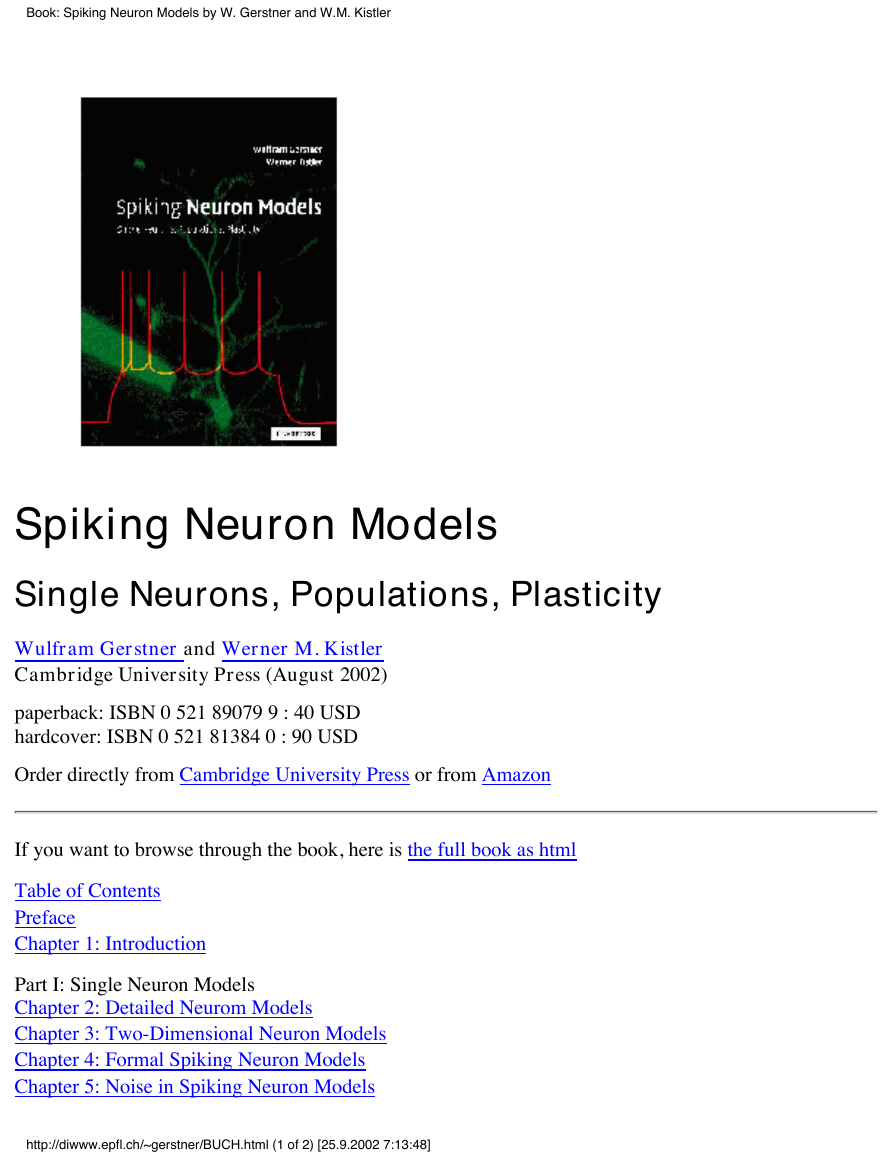

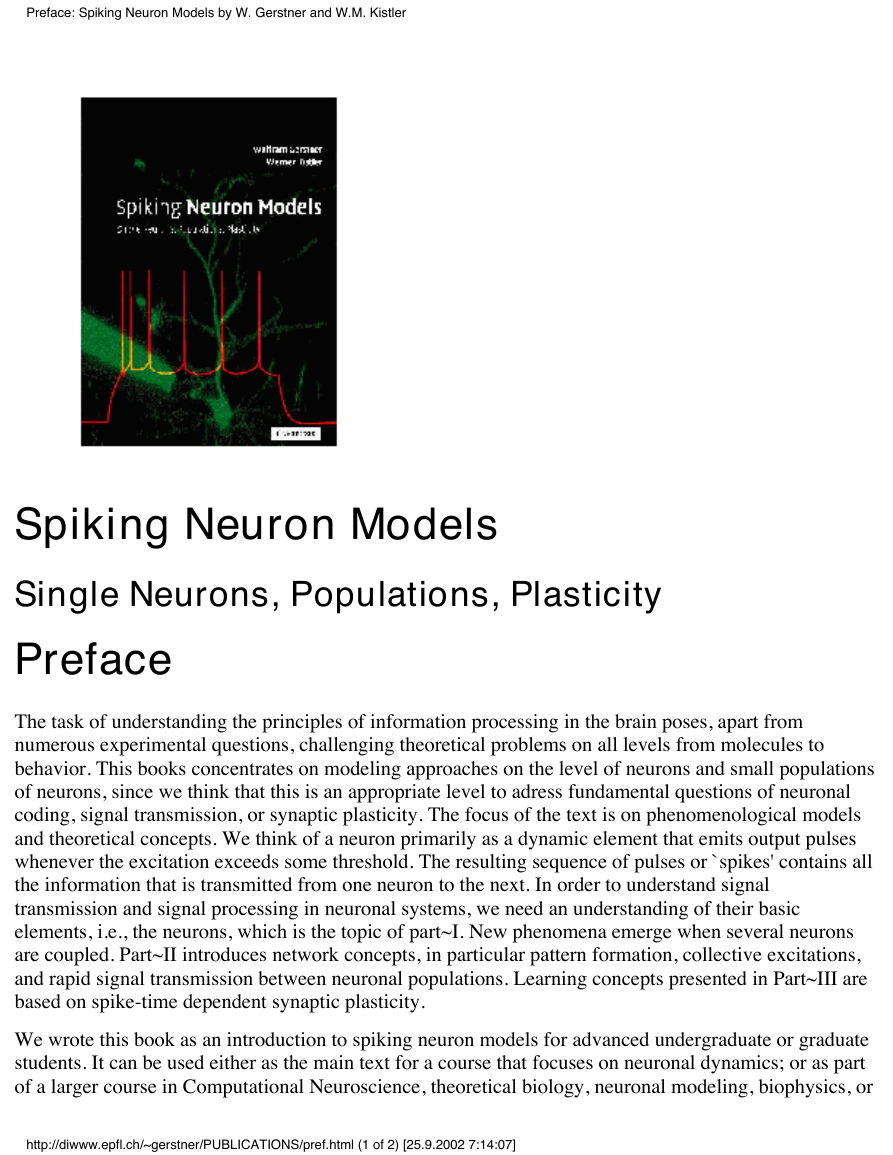
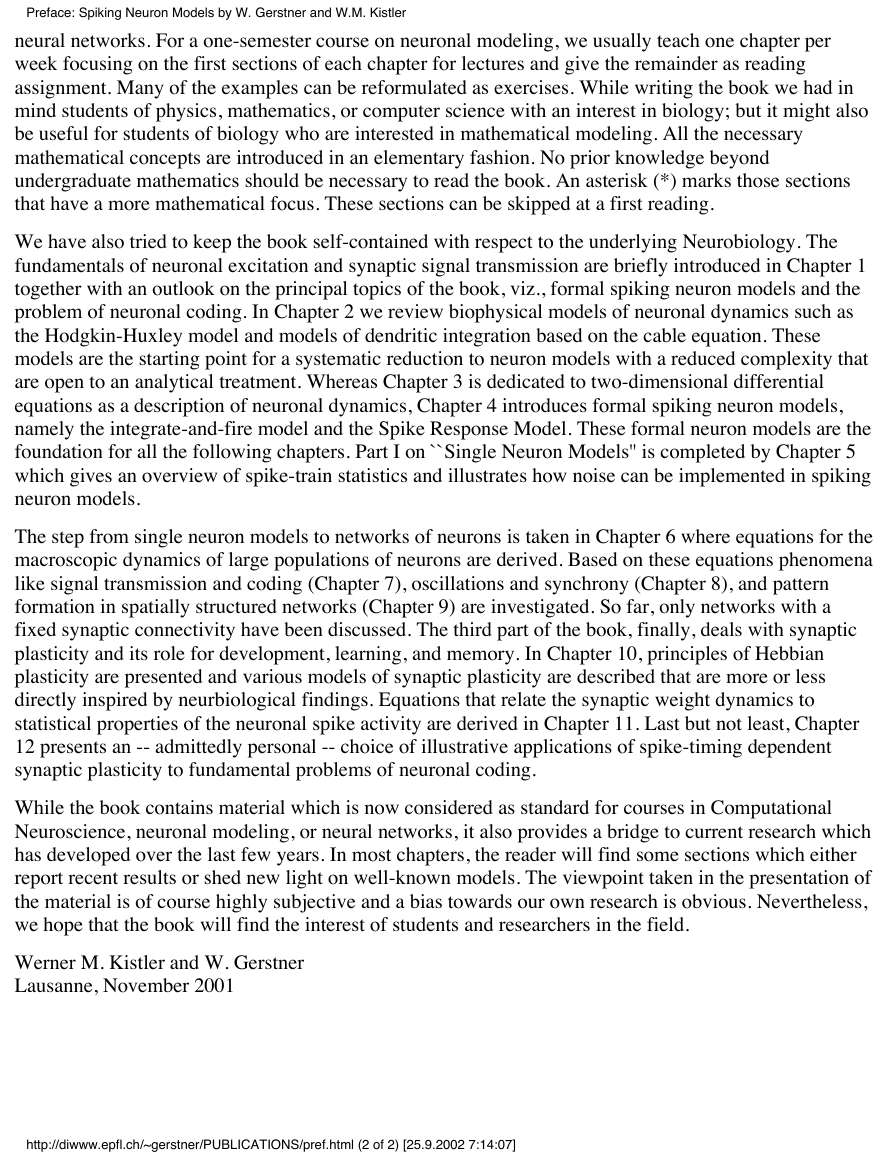
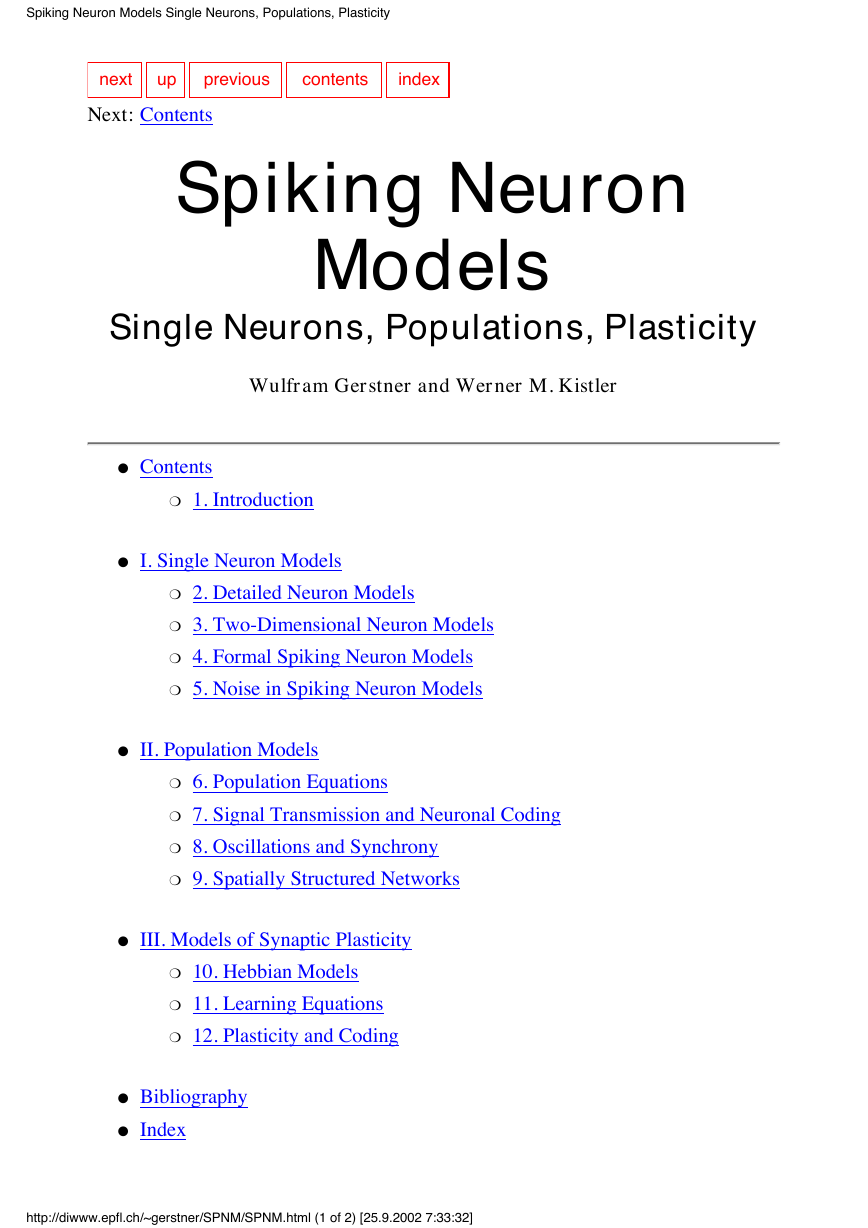

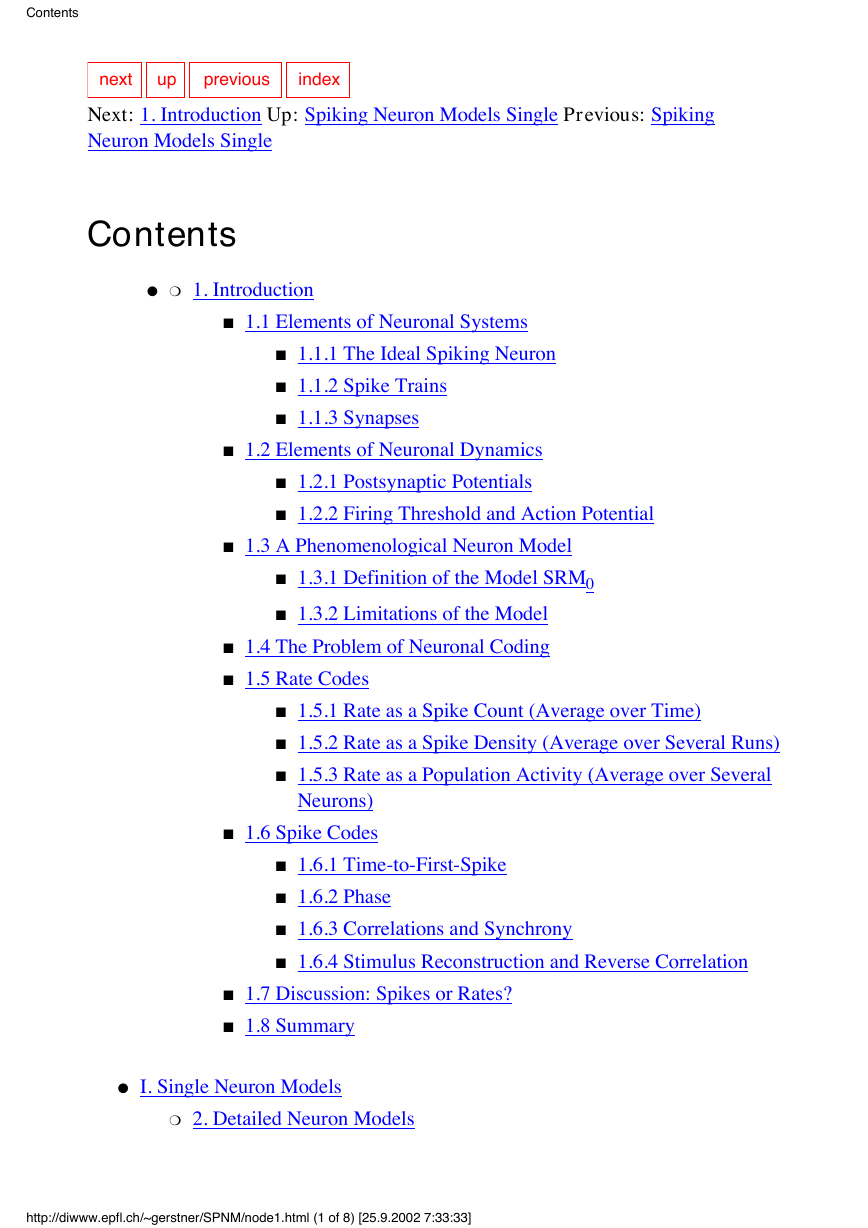
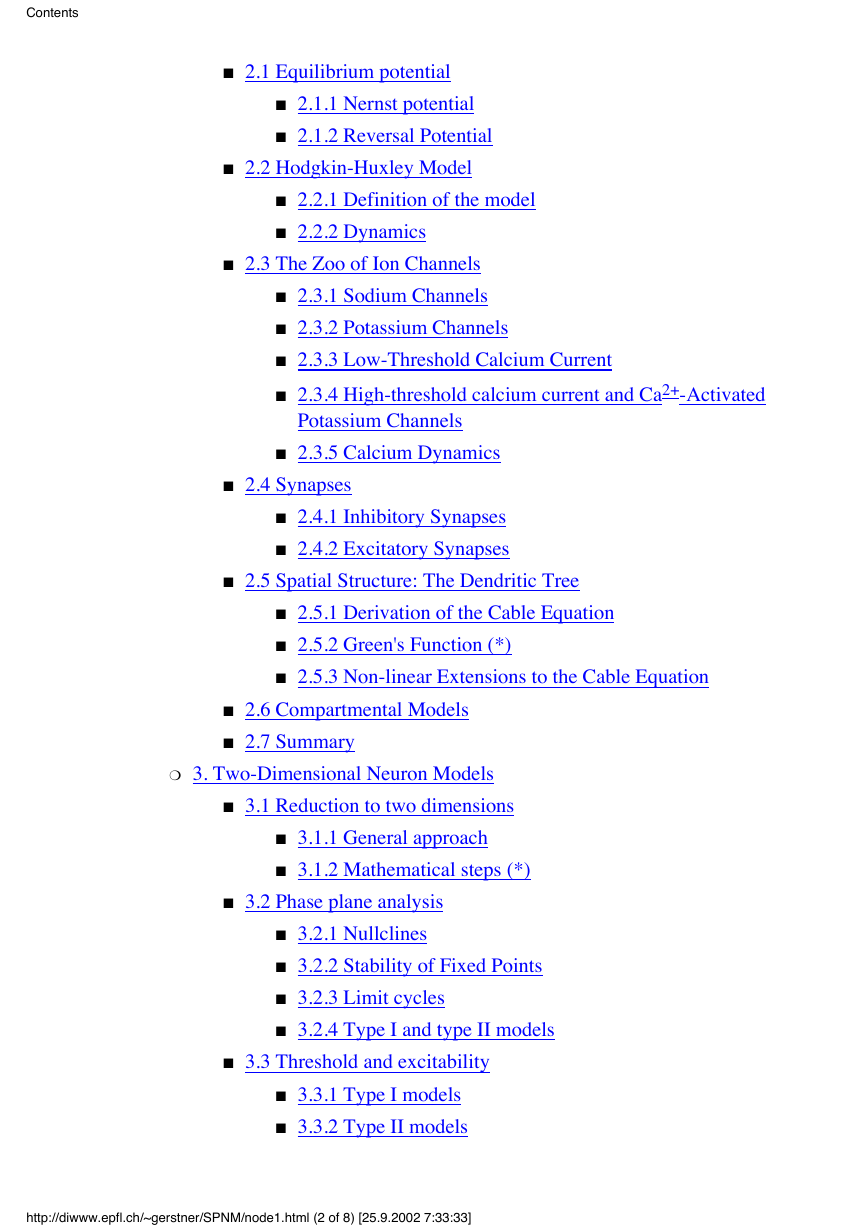








 2023年江西萍乡中考道德与法治真题及答案.doc
2023年江西萍乡中考道德与法治真题及答案.doc 2012年重庆南川中考生物真题及答案.doc
2012年重庆南川中考生物真题及答案.doc 2013年江西师范大学地理学综合及文艺理论基础考研真题.doc
2013年江西师范大学地理学综合及文艺理论基础考研真题.doc 2020年四川甘孜小升初语文真题及答案I卷.doc
2020年四川甘孜小升初语文真题及答案I卷.doc 2020年注册岩土工程师专业基础考试真题及答案.doc
2020年注册岩土工程师专业基础考试真题及答案.doc 2023-2024学年福建省厦门市九年级上学期数学月考试题及答案.doc
2023-2024学年福建省厦门市九年级上学期数学月考试题及答案.doc 2021-2022学年辽宁省沈阳市大东区九年级上学期语文期末试题及答案.doc
2021-2022学年辽宁省沈阳市大东区九年级上学期语文期末试题及答案.doc 2022-2023学年北京东城区初三第一学期物理期末试卷及答案.doc
2022-2023学年北京东城区初三第一学期物理期末试卷及答案.doc 2018上半年江西教师资格初中地理学科知识与教学能力真题及答案.doc
2018上半年江西教师资格初中地理学科知识与教学能力真题及答案.doc 2012年河北国家公务员申论考试真题及答案-省级.doc
2012年河北国家公务员申论考试真题及答案-省级.doc 2020-2021学年江苏省扬州市江都区邵樊片九年级上学期数学第一次质量检测试题及答案.doc
2020-2021学年江苏省扬州市江都区邵樊片九年级上学期数学第一次质量检测试题及答案.doc 2022下半年黑龙江教师资格证中学综合素质真题及答案.doc
2022下半年黑龙江教师资格证中学综合素质真题及答案.doc